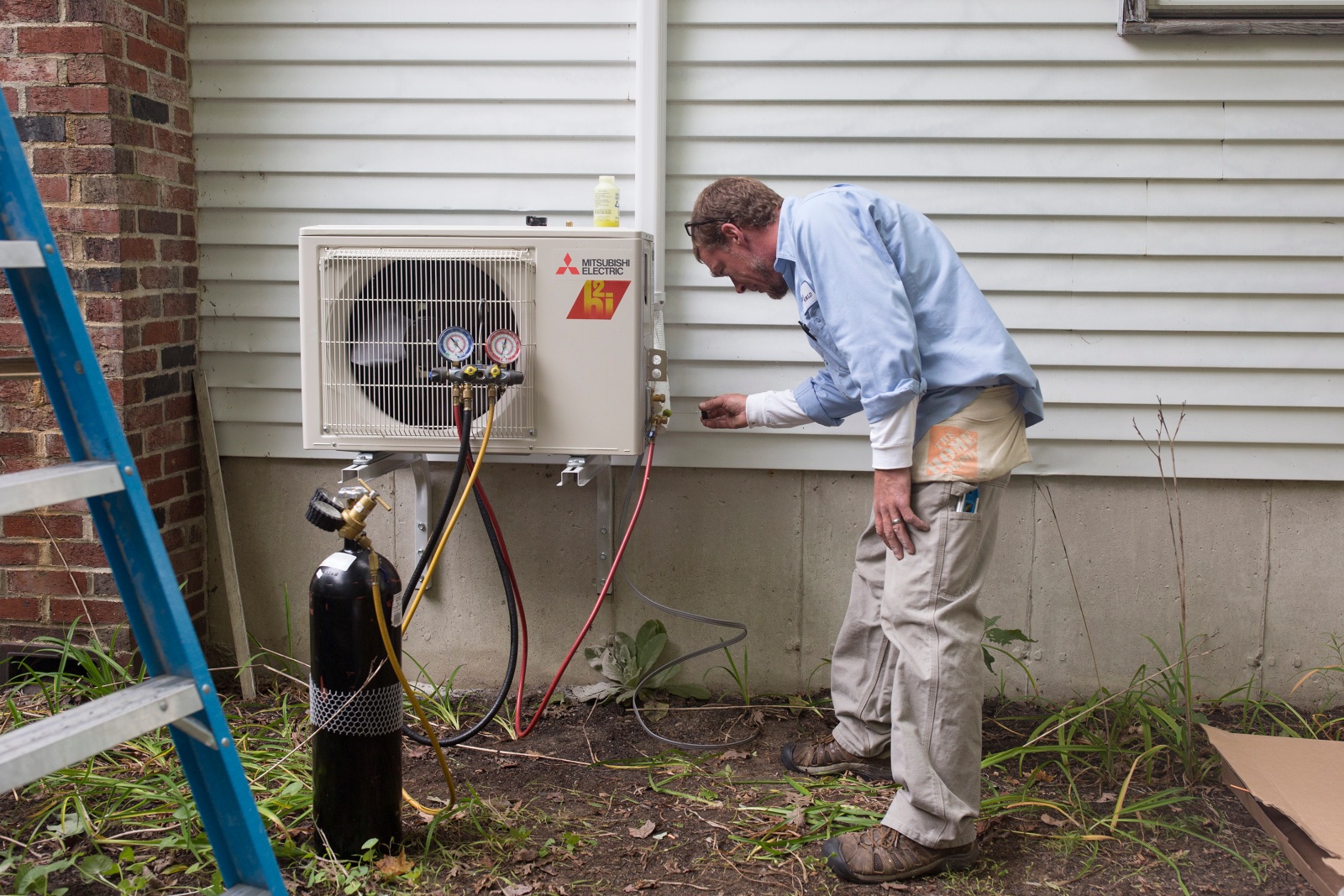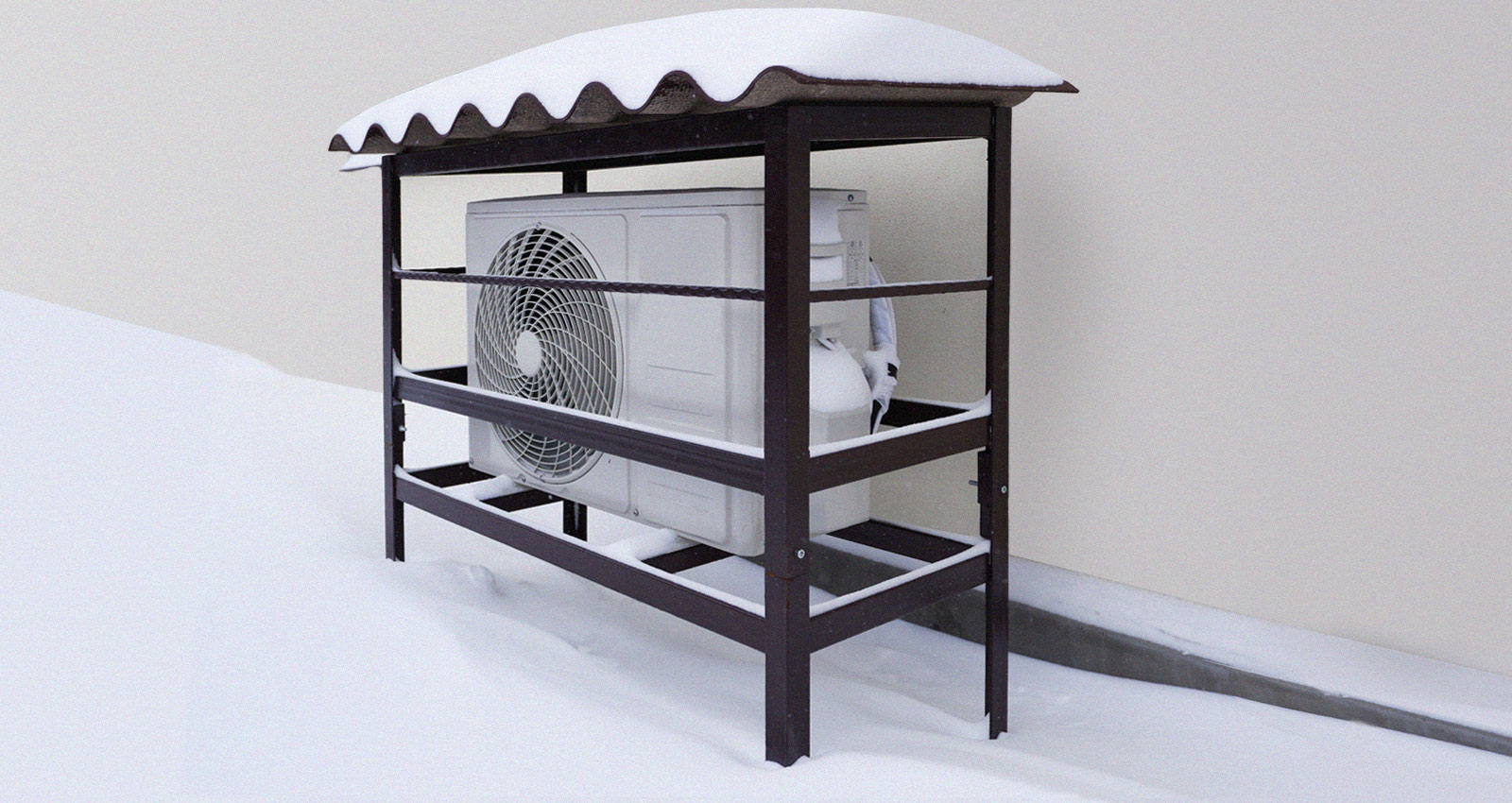Heat pumps – heating and cooling systems that run entirely on electricity – have been getting a lot of attention recently. They’ve been called the “most overlooked climate solution” and “an answer to heat waves.” And the technology is finally experiencing a global boom in popularity. Last year, 117 million units were installed worldwide, up from 90 million in 2010. As temperatures and greenhouse gas emissions rise, heat pumps, which can be easily powered by renewable energy, promise to provide a pathway to carbon-free home heating. Environmental activist Bill McKibben even suggested sending heat pumps to Europe to help wean the continent off Russian natural gas.
But despite this global surge in popularity, heat pumps in the U.S. are laboring under a misconception that has plagued them for decades: That if the temperature falls to below 30 or even 40 degrees Fahrenheit, their technology simply doesn’t work. “Do heat pumps work in cold weather” is even a trending question on Google.
It’s a narrative that Andy Meyer, a senior program manager for the independent state agency Efficiency Maine, has spent the past decade debunking for residents in one of the U.S.’s coldest states.
“There were two types of people in Maine in 2012,” he said. “Those who didn’t know what heat pumps were — and those who knew they didn’t work in the cold.” But while that concern may have been true years ago, he said, today “it’s not at all true for high-performance heat pumps.”
Air-source heat pumps — there are also geothermal heat pumps and water-source heat pumps — are poorly named and poorly understood. (According to one small 2020 study from the heating tech company Sealed, about 47 percent of homeowners in the U.S. Northeast had never even heard of heat pumps.) They are essentially reversible air conditioners: Like AC units, they can take heat from inside a home and pump it out to provide a cooling effect. But unlike air conditioners, they can also run backwards — drawing heat from outdoors and bringing it inside to warm a home.
That process of moving heat rather than creating it explains why heat pumps are mind-blowingly efficient. A gas furnace — which burns natural gas to create heat — can only reach around 95 percent efficiency. A heat pump can easily reach 300 or 400 percent efficiency; that is, it can make around 3 to 4 times as much energy as it consumes.

Years ago, the technology really only worked in mild climates. The early generation of heat pumps were installed mostly in southern states that needed air conditioning and just a little bit of extra warmth in the winter. “They really gained traction in areas where it wasn’t cold,” said Ben Schoenbauer, a senior research engineer at the Center for Energy and Environment, or CEE, in Minnesota.
But over the past decade or so, heating companies began developing a new generation of heat pumps with “inverter-driven variable-speed compressors” — a mouthful of a term that essentially gives the heat pump the ability to more quickly transport heat from frigid outdoor air.
Soon, high-performance heat pumps were being produced that could warm a home even when outdoor temperatures were down to -31 degrees Fahrenheit. (Even in extreme sub-zero temperatures, there is still some amount of heat in outdoor air.) A heat pump’s efficiency does go down as it gets colder, but even in subzero temperatures high-end units can be over 100 percent efficient. And in recent years, some of the country’s coldest states have gone all-in on the technology. According to a study in Environmental Research Letters, heat pumps could reduce CO2 emissions in 70 percent of homes across the country; homes heated by inefficient electric heaters or fuel oil could particularly benefit. Utilities and states have started offering rebates for consumers to install heat pumps, even in colder states like New York, Massachusetts, or Maine. Many environmental groups and state agencies are working hard to convince residents that top-of-the-line heat pumps can function well in cold climates.
Efficiency Maine has been part of that trend. Early on, Meyer said, residents were deeply skeptical that a simple electric device could keep them warm in the state’s frigid conditions. But Efficiency Maine recruited installers, ran social media and radio ads, and released studies and reports showing that heat pumps could work. “It started in Northern Maine — a very close, tightly knit community,” Meyer said. Once a few people installed heat pumps, they began telling their friends, who told their friends, and so on. So far, Meyer says, Efficiency Maine has offered rebates for 100,000 heat pumps — in a state where there are less than 600,000 occupied housing units. Maine now has a higher rate of heat pump installations per capita than most European countries.
Other organizations are doing similar work. The Center for Energy and Environment in Minnesota has formed a collaborative with utilities to help boost heat pump adoption in the state; they also maintain a list of contractors who have been vetted to install the systems. The Northeast Energy Efficiency Partnerships, a Massachusetts-based nonprofit, has resources for installers and consumers, including a list of air-source heat pumps that operate well under the climate conditions of Northeast states. Some heat pumps are even being installed in Alaska, where average winter temperatures hover around a high of 23 degrees Fahrenheit.
One of the benefits of installing heat pumps is cost-savings. In Maine, many homes are heated with fuel oil or propane. At current prices, Meyer says, running a heat pump costs half as much as oil and one-third as much as propane. According to Efficiency Maine’s analysis, that can save homeowners up to thousands of dollars in annual energy costs. A 2017 study by CEE similarly found that installing heat pumps in Minnesota could save residents between $349 and $764 per year, compared to heating with a standard electric or propane furnace.
There are some caveats. Lacey Tan, a manager for the carbon-free buildings program at the energy think tank RMI, says there is still a price premium for heat pumps: Some installers aren’t yet comfortable with how they work and try to reduce their risk by increasing up-front costs. In cold climates, some homes may want to have a back-up heating system for extremely frigid days or in the event of a power outage. (In Maine, Meyer says many homeowners use wood stoves as back-up for their heat pumps.)
But many experts believe more and more cold-weather heat pumps will be sold as homeowners learn about the new advances in the technology. Meyer says that Mainers who install heat pumps naturally begin to share their experience with friends and family. “We have over 100,000 salespeople who have already gotten heat pumps,” he said jokingly. “Not bad for a state where they ‘don’t work in the cold.’”


